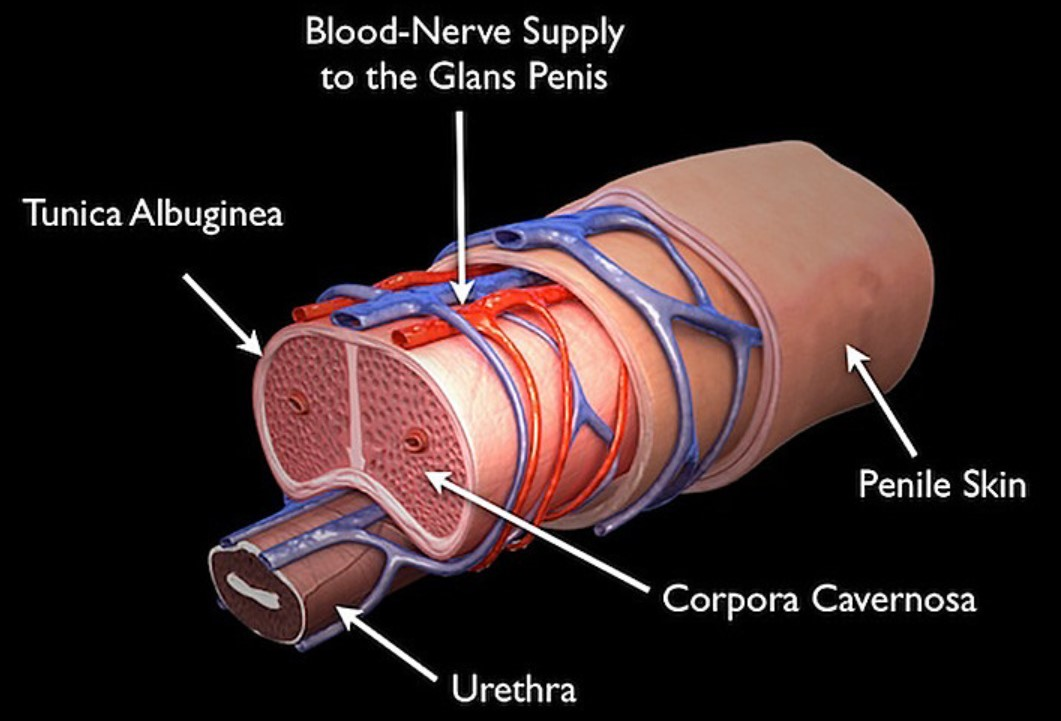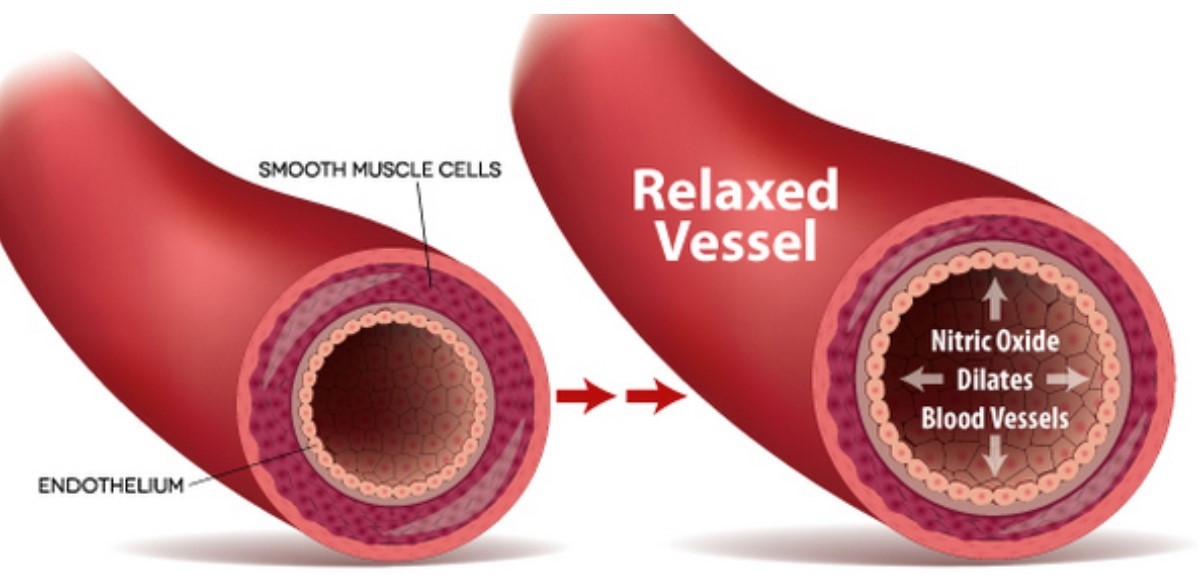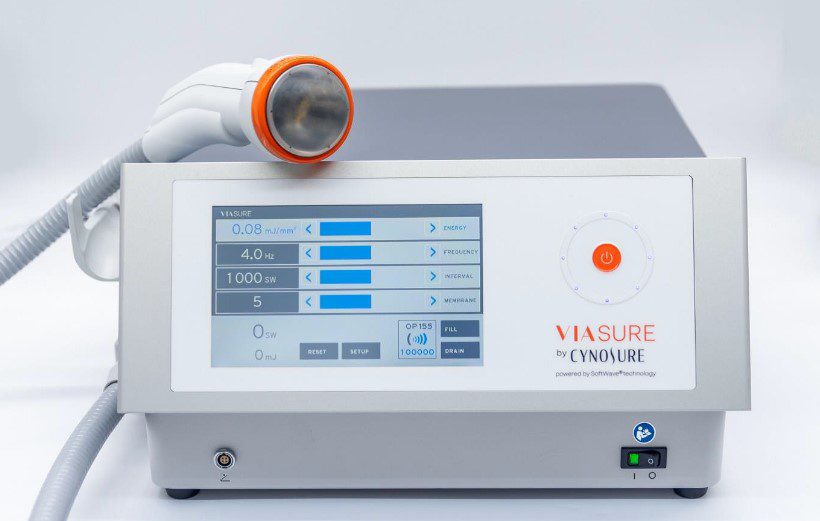

The male reproductive system or organ should function properly for sexual stimulation in erection and ejaculation purposes. The penis, an intricate organ essential for male sexual function, undergoes a remarkable transformation during erection. This complex process, orchestrated by a delicate interplay of anatomical structures, neural signals, and biochemical reactions, culminates in the stiffening and enlargement of the penis. The Penis anatomy and how a man erects or ejaculates are further explored in this blog post.
Penile anatomy
Penile erection, the physiological process that causes the penis to stiffen and increase in size, is a complex phenomenon involving a multitude of factors. The Penis functionality is essential to male sexual arousal and reproductive purposes. This organ consists of corpora cavernosa chambers, urethra, erectile tissue, the shaft, the head or glans, and the meatus. (source)


Let’s briefly explain each of them below:
There are two corpora cavernosa chambers. These two run through the length of the penis and have a sponge-like maze of blood vessels.
Right under these two chambers, the urethra functions as a channel to run urine and sperm. Erectile tissue consisted of two main arteries and other nerves and veins and encompasses the urethra.
The longest part of the penis is the shaft and at the end of it, the glans, the head, is located.
At the tip of the head, the meatus is an opening through which semen and urine are discharged.
Neural Control of Erection
This is a primary need to initiate sexual activity or engage in solo pleasure for men. Once men are sexually stimulated, it erects and signals readiness for involvement in an intercourse. What happens in the body and how do they occur?
The erection process is arranged by a delicate interplay of neural, vascular, and hormonal mechanisms. Neural sexual stimulation, typically initiated by sensory or psychological stimuli, activates the parasympathetic nervous system, leading to the release of Nitric Oxide (NO) in the corpora cavernosa, the two spongy erectile tissues of the penis. NO triggers the relaxation of trabecular smooth muscle cells in the corpora cavernosa, allowing blood to flow in, expanding the tissue and causing the penis to engorge. Simultaneously, venous outflow from the corpora cavernosa is restricted, further contributing to penile rigidity. (source)
NO; the penile erections catalyst


As said above upon release, NO activates guanylyl cyclase, an enzyme that converts guanosine triphosphate (GTP) to cyclic guanosine monophosphate (cGMP). This increase in cGMP concentration triggers the relaxation of smooth muscle cells in the corpora cavernosa, allowing blood to flow into the penis. (Source)
Hormonal Role
Testosterone, the primary male sex hormone, plays a crucial role in maintaining erectile function. Testosterone stimulates the production of Nitric Oxide and contributes to the development and maintenance of the corpora cavernosa. You can learn more from our future blog posts.


Erection and Detumescence: A Dynamic Dance
The erection process is a dynamic interplay between relaxation and contraction. As blood fills the corpora cavernosa, the penis becomes rigid and enlarged. Simultaneously, venous outflow is restricted, preventing blood from escaping. This interplay of blood flow and venous occlusion maintains the rigid state of the penis.
Detumescence, the Reversal of Erection
The reversal of erection, known as detumescence, is initiated by the decline in cyclic guanosine monophosphate (cGMP) levels. This decrease in cGMP concentration leads to the contraction of smooth muscle cells in the corpora cavernosa, allowing blood to flow out of the penis. As blood pressure decreases, the penis gradually returns to its flaccid state. (Source)
Penile dysfunction: When Erection Falters
Erectile dysfunction (ED) means the inability to get or keep enough erection to complete sexual intercourse. Knowing the proper mechanism, the physical reasons for such troubles may be related to any of the stages explained above.


Erectile dysfunction occurs in different severity levels in men. For mild cases, some changes in lifestyle and habits work best, and some can benefit from ED pills to get their erection back. In more severe cases, surgery or shockwave therapy can be a safe and more lasting way to cure ED. If the penis not erecting at all, you need to immediately make an appointment with a Medical Doctor. Our MD, Dr. Afshin Arya has more than 19 years of experience and is ready to help you with all of your delayed ejaculation problems.
How does ejaculation occur in men?
The friction on the glans and other stimuli causes the nervous system to signal ejaculation. At this time the epididymis walls squeeze and push the sperms to the vas deferens by creating peristaltic waves. The semen (as a mix of secretions and sperm) rushes into the urethra with the seminal vesicles and prostate stimulation. The contraction of the urethra muscles prompts the semen out of the it. The backward flow of semen to the bladder is prevented by the closure and tightening of the muscle in the neck of the bladder.
Men may experience some troubles including delayed, premature, or retrograde ejaculation. Knowing how the penis works when ejaculating helps us to detect what specific function the penis fails to exercise. Moreover, this signals the sexual climax in men. Experiencing delayed ejaculation and Premature one are two common sexual disorders among men. There are some techniques and lifestyle changes that can prevent or treat mild cases of premature ejaculation. However, you should consult with your MD or Urologist about these issues and try not to be shy.
Different Types
Psychogenic ED stems from psychological factors, such as stress, anxiety, or depression. These psychological factors can interfere with the normal neural and hormonal pathways involved in erection.
Organic ED results from underlying medical conditions, such as vascular disease, diabetes, or nerve damage. These conditions can impair blood flow to the penis or disrupt the neural signals responsible for erection.
Mixed ED combines both psychological and organic factors. This type of ED is the most common, accounting for approximately 70% of all ED cases.
Penile Shockwave Therapy


Shockwave therapy has been proven to be effective for erectile dysfunction treatment. In this treatment method, the healthcare provider uses a wand-like device near this organ nerves to trigger healthy blood flow and remodel the tissue. Shock wave therapy should be repeated in multiple sessions to achieve the best results to cure ed. This treatment method, has been found very much effective in severe cases of ed.
To get a gist of what really happens during a shockwave therapy session, we encourage you to read this article: What is Shock Wave Therapy for Erectile Dysfunction?!
Our recommendation is to learn more about potential ejaculation problems, such as PE, before getting panicked. Of course, visiting a doctor can be reassuring, but it is best to have some idea of what really occurs during the treatment process.
Conclusion
Erection and ejaculation are two main functions that are necessary for reproductive and pleasure purposes. By knowing the penis meaning and its anatomy, we can better understand how penis ejaculation and erection occur. If these two functions are not occurring properly or in case of penile erection pain, then you must visit a Medical Doctor (MD.) to receive a proper penile erectile dysfunction solution or premature ejaculation treatment. Living in Aurora or Toronto, you can always call and make an appointment with us at Excellence clinic.